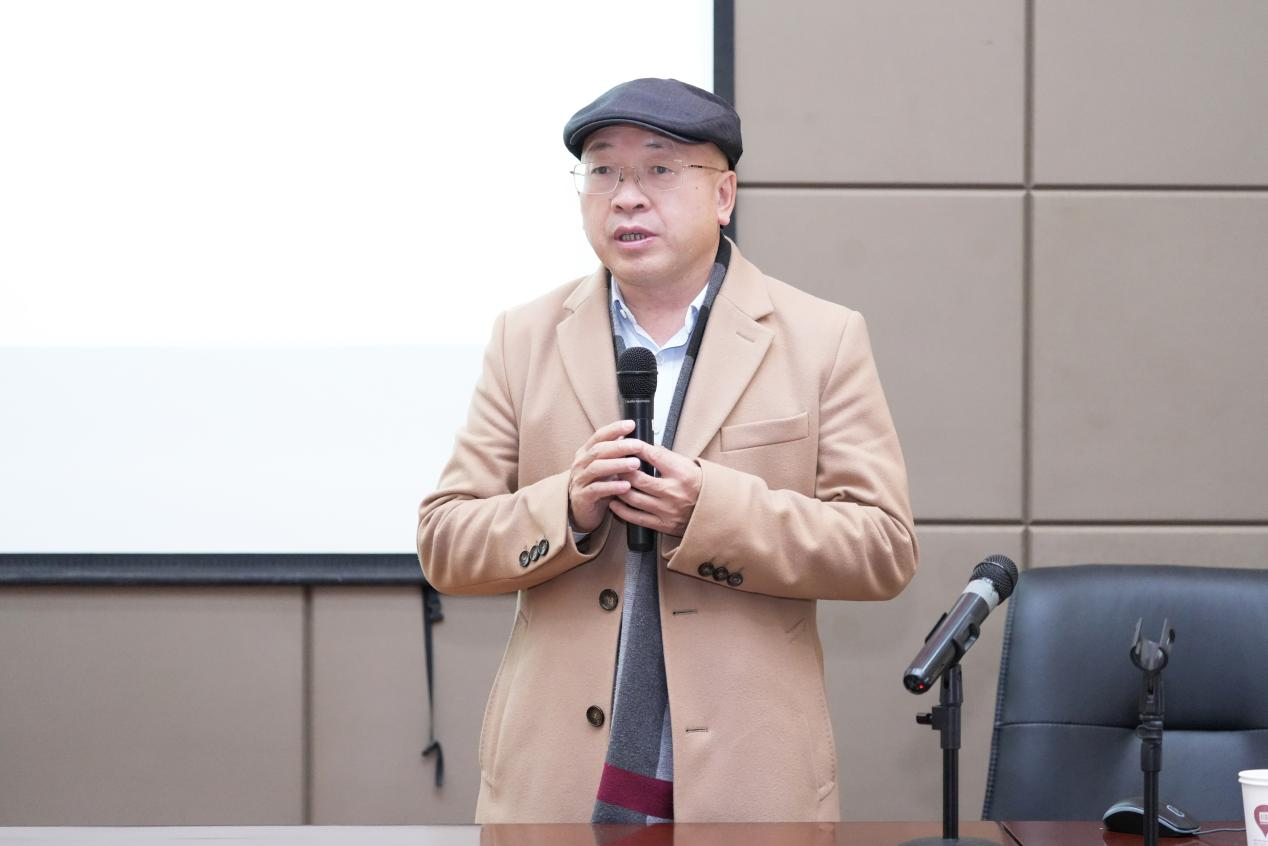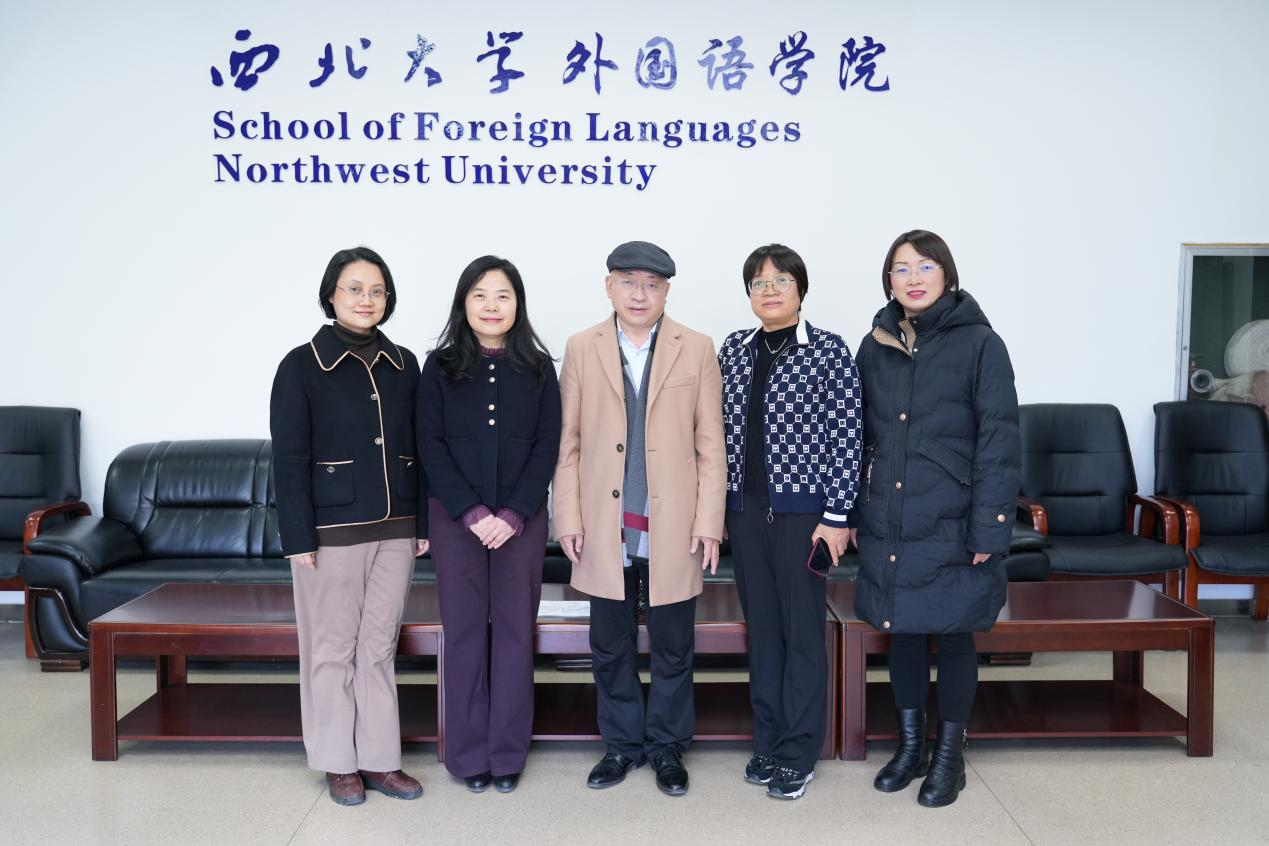On the afternoon of November 29, 2024, Professor Wang Shunyu, doctoral supervisor, and leading scholar of the “XISU Scholar” program at Xi’an International Studies University, was invited to give a lecture at the 42nd session of the “Distinguished Scholars Lecture” series at the School of Foreign Languages, Northwest University. Professor Wang is also an executive council member of the China Association of Language & Education, vice president of the WITTA Corpus Research Association, and an executive council member of the Western Region Foreign Language Education Research Association. The lecture, titled “Research on Overall Text Translation Quality Evaluation Based on Semantic Network Similarity Calculation,” was chaired by Su Rui, the associate dean of the School of Foreign Languages. Approximately one hundred faculty and students attended the lecture.
Professor Wang Shunyu, after introducing the semantic network approach and the principles of network similarity calculation in language research, discussed the application of this method in evaluating construct invariance and semantic equivalence between the source text and its translation. The language materials selected for this study were taken from the Chinese and English versions of Humanity’s Shared Future and Global Governance ( Xi Jinping: The Governance of China, Volume 4), which were stored in parallel sentence format. (The dataset included 255 sentence segments, totaling 14,269 words, with 2,790 unique words.) First, he calculated and ranked the core terms of the source text using TF-IDF, extracting key terms and identifying their corresponding translations. A total of fifty representative terms were selected. The parallel sentence segments in Chinese and English were processed and converted into document-feature matrices, retaining the terminology columns. To ensure consistency, the names and order of the concept columns in both language matrices were aligned. Using the R language network comparison test package, he computed and constructed a term correlation network. Professor Wang then conducted a local comparison of the centrality of the 50 term nodes across the networks, considering metrics such as betweenness, closeness, strength, and expected influence. The results indicated that the connectivity, centrality, and influence trends of the terms in both the Chinese and English datasets were generally consistent, although some differences were noted for certain terms. Further comparisons of the global network structures between the Chinese and English datasets revealed no significant difference in the term correlation networks (M = 0.456, P = 0.331 ≥ 0.05). Similar results were found for global strength and expected influence. Professor Wang emphasized that this approach does not focus on the micro-level aspects of translation (such as individual words, sentences, or paragraphs), instead offers valuable insights into the overall quality of translation.
At the meeting, Professor Wang Shunyu engaged in discussions with the faculty and students on topics such as semantic network methods. Professor Wang also introduced new approaches to translation studies, inspiring the faculty and students with fresh ideas for translation research.

Professor Wang Shunyu

Host: associate dean, Su Rui

Venue

Group Photo
Text: Li Zhaoyan
Illustrations: Qu Yuanjun